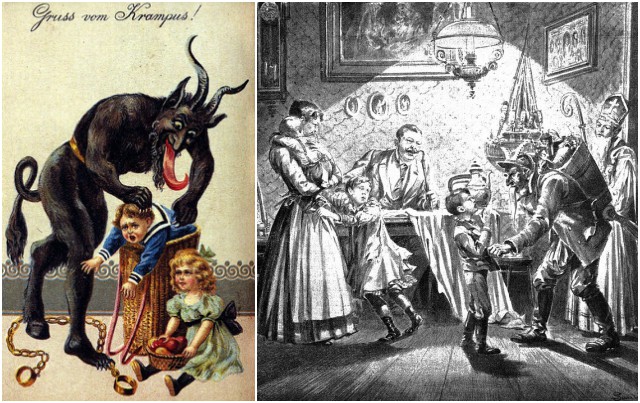When we were small children, our parents all told us the story of Santa. But what about his horned helper, Krampus?
Krampus is the half-goat half-man creature that helps Santa deal with naughty kids. According to European folklore, while Santa gives the good children gifts and joy, Krampus chases after the bad ones with whips and chains.
There are many origin stories behind Krampus, whose name is derived from the German word krampen, meaning claw. According to one of them, Krampus is said to be the son of Hell in Norse mythology. Others trace him back to demonic creatures in Greek mythology, pagan rituals, the goddess Perchta, or Satan himself.
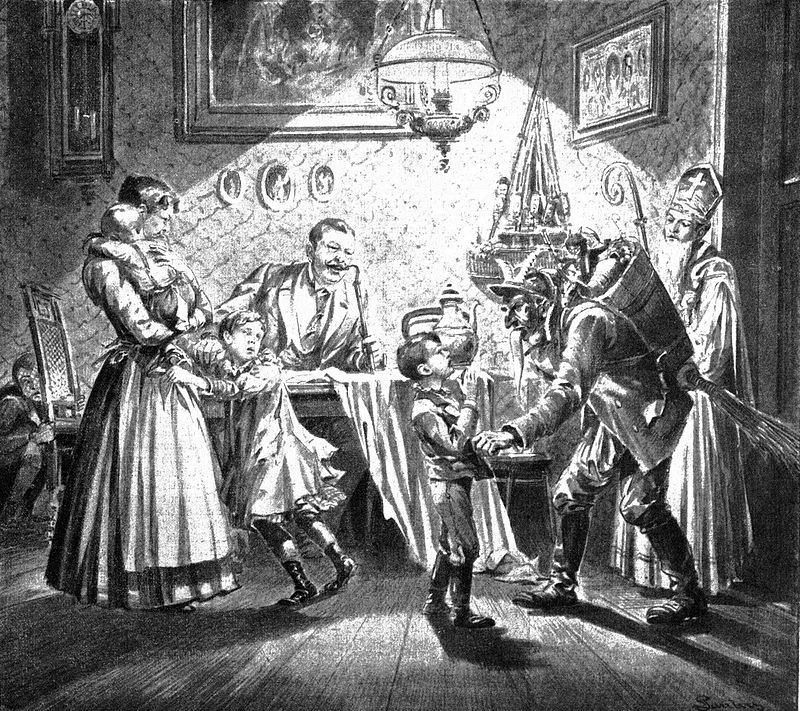
The legend of Krampus emerged from Alpine folklore as a key part of Christmas celebrations, where he visits children alongside jolly old St. Nicholas. The creature moved to other European countries and is known in other cultures as Knecht Ruprecht, Certa, Perchten, Black Peter, Schmutzli, Pelznickel, and Klaubauf.
According to the legends, if a kid didn’t behave well, Krampus would turn up to the house the night before December 6 (known as Krampusnacht) to punish the wicked child. Krampus has been known to whip children with birch rods and throw them into a wicker basket to take them down to Hell for a year.
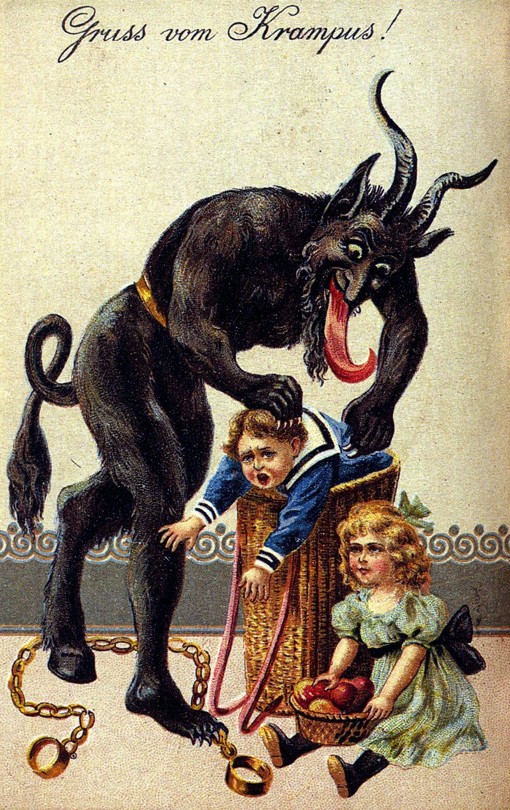
Krampus appears in many variations and most share some common physical characteristics.
It is described as hairy creature, usually brown or black with the horns of a goat, cloven hooves, fangs, and a long, pointy tongue. He also carries chains and thrashes them for dramatic effect. Legend has it that the chains symbolize the binding of the devil by the Christian Church.
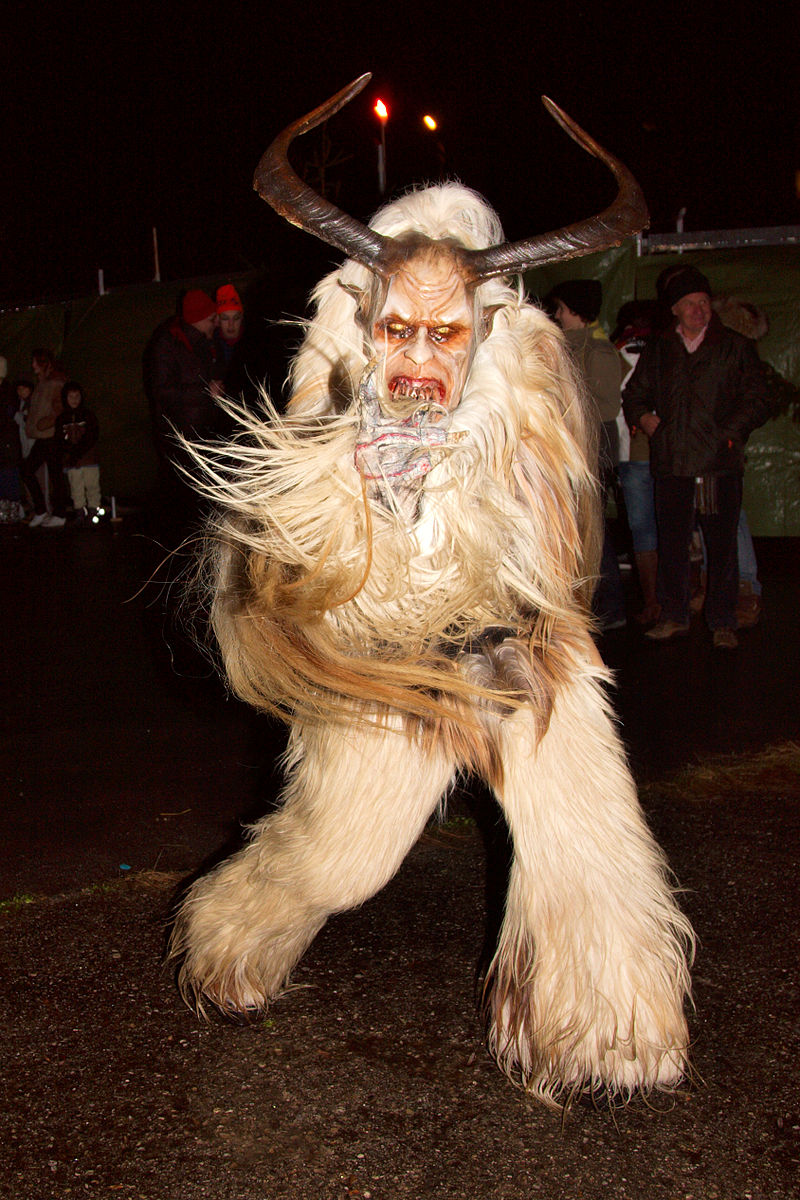
Krampus enjoyed an especially popular revival in the early 20th century as a fixture on greeting cards but it hasn’t always been an accepted European tradition and it was actually banned a few times – the Catholic Church forbade the raucous celebrations, and in the early 20th century Krampus was prohibited by the Austrian Fascist government because it was considered a creation of the Social Democrats. However, the tradition was revived with the fall of the government after World War II.
Krampus is celebrated in Europe and it is a chance to have Halloween for adults, with many cities and towns still holding traditional annual parades in which young men dress as the Krampus, marching in the streets, clanking bells and growling at laughing onlookers. More than 1200 Austrians gather in Schladming, Styria each year to dress up as Krampus.
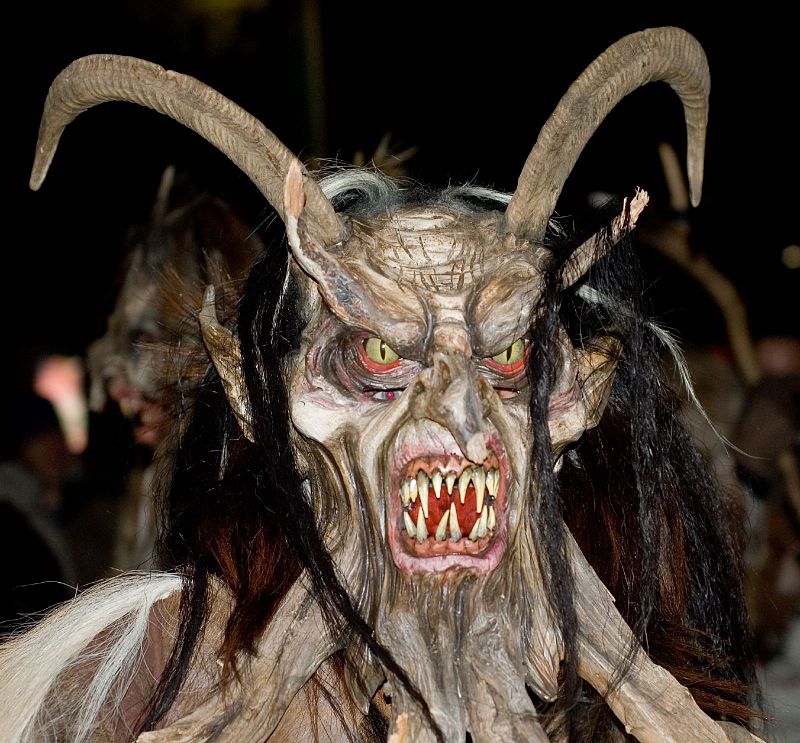
In North America, support for the Christmas devil is not as fanatic as Europe, but it is growing with Krampus festivals across the country, including ones in Los Angeles, Philadelphia, and New York City.
